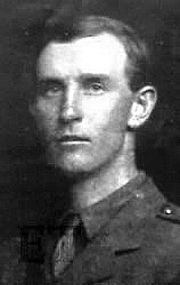Nationality British Name Raymond Asquith | Occupation Lawyer Role Barrister | |
 | ||
Spouse Katharine Frances Horner (m. 1907) Children Julian Asquith, 2nd Earl of Oxford and Asquith, Lady Helen Frances Asquith, Lady Perdita Rose Mary Asquith Parents Helen Kelsall Melland, H. H. Asquith Siblings Arthur Asquith, Herbert Asquith, Anthony Asquith, Violet Bonham Carter, Cyril Asquith, Baron Asquith of Bishopstone Similar People H H Asquith, Herbert Asquith, Margot Asquith - Countess, Violet Bonham Carter, Elizabeth Bibesco | ||
Remembering Lieutenant Raymond Asquith
Raymond Asquith (6 November 1878 – 15 September 1916) was an English barrister and son of British Prime Minister H. H. Asquith. A distinguished Oxford scholar, he was a member of a fashionable group of intellectuals known as The Coterie, notable for unconventional lifestyles and lavish hospitality. Like several of them, Asquith was killed in action in World War I.
Contents
Career and honours
Asquith was the eldest son and heir of British Prime Minister H. H. Asquith. by his first wife Helen Kelsall Melland (died 1891).
He was educated at Winchester, from where he won a scholarship to Balliol in 1896, taking with him a reputation for brilliance. He won the Ireland, Derby, and Craven scholarships, and graduated with first-class honours. Elected a fellow of All Souls in 1902, he was called to the bar in 1904. The tall, handsome Asquith was a member of "the Coterie," a group of Edwardian socialites and intellectuals.
Asquith was junior counsel in the North Atlantic Fisheries Arbitration and the investigation of the sinking of the Titanic, and was considered a putative Liberal candidate for Derby. However, his rise was interrupted by the outbreak of the First World War. He was initially commissioned, on 17 December 1914, as a second lieutenant into the 16th (County of London) Battalion, London Regiment. He was transferred to the 3rd Battalion, Grenadier Guards, on 14 August 1915 and assigned as a staff officer, but he requested to be returned to active duty with his battalion, a request granted before the Battle of the Somme. While leading the first half of 4 Company in an attack near Ginchy on 15 September 1916, at the Battle of Flers-Courcelette, he was shot in the chest and died while being carried back to British lines. He was buried in Guillemont Road Cemetery, where his headstone is inscribed 'Small time but in that small most greatly lived this star of England', a concluding line from Shakespeare's "Henry V", about a warrior king who had died in his thirties after campaigns in France.
Asquith's death exemplified the end of the Edwardian era in the First World War. The writer John Buchan devoted several pages of his autobiography Memory Hold-the-Door to his memories of Raymond Asquith and their friendship.
A memorial tablet to Asquith was erected in Amiens Cathedral. The inscription, in French and Latin, states:
Priez pour l'ame de RAYMOND ASQUITH Lieutenant aux Grenadiers de la Garde Royale. Fils aine de Herbert Henry Asquith premier ministre du Royaume Uni. Ne le 6 Nov. 1878. Tombe au champ d'honneur pres de Guinchy le 15 Sept. 1916.
O ORIENS SPLENDOR LUCIS AETERNAE VENI ET ILLUMINA SEDENTES IN TENEBRIS ET UMBRA MORTIS. Gloriae memor posuit conjux.
Family
Raymond Asquith was married on 25 July 1907 to the former Katharine Frances Horner (1885–1976), younger daughter of Sir John Francis Fortescue Horner, of Mells, Somerset, descended from 'Little Jack Horner' of nursery song fame. Her mother, Lady Horner (d. 1940), was the former Frances Jane Graham, elder daughter of William Graham, a rich merchant, passionate art collector, and Liberal member of parliament for Glasgow. Lady Horner was a notable hostess and patron of the arts, especially the Pre-Raphaelites and John Singer Sargent. The Horners had four children – Cicely (born 1883), Katharine (1885), Mark (who died in his teens), and Edward (1888).
Asquith and his wife had three children:
Asquith died nearly ten years before his father was raised to the House of Lords in 1925 as Earl of Oxford and Asquith. Katharine eventually inherited Mells Manor because her younger and only surviving brother, Edward Horner (1888–1917), was also killed in the war. He was buried in France, but his memorial in St Andrew's Church, Mells was designed by his mother's friend Edwin Lutyens, who was a patron of Monsignor Ronald Knox. Katharine converted to Roman Catholicism after being widowed and became a friend of Siegfried Sassoon, who also converted, following her example. She also remained in touch with Evelyn Waugh, another convert. All three of her children were brought up as Roman Catholics.
